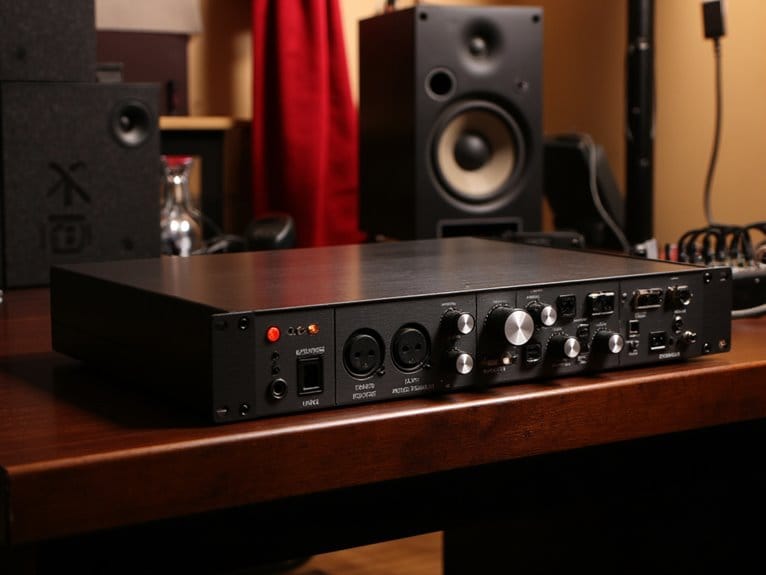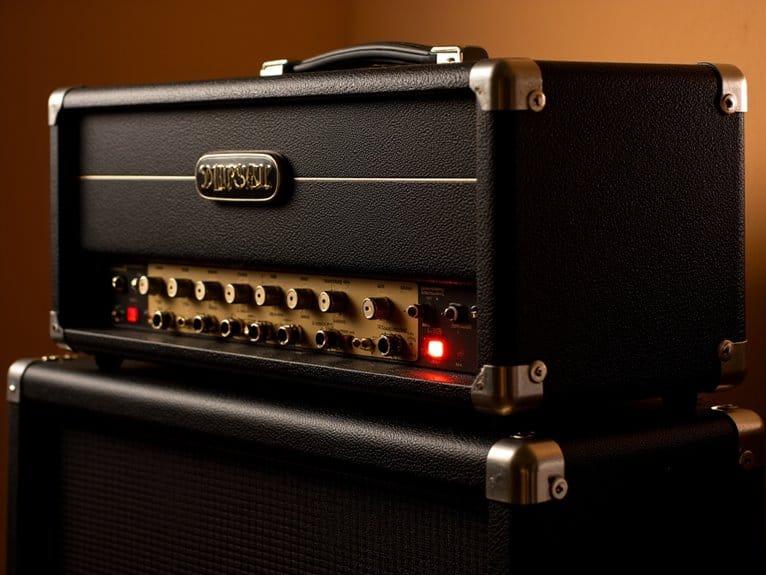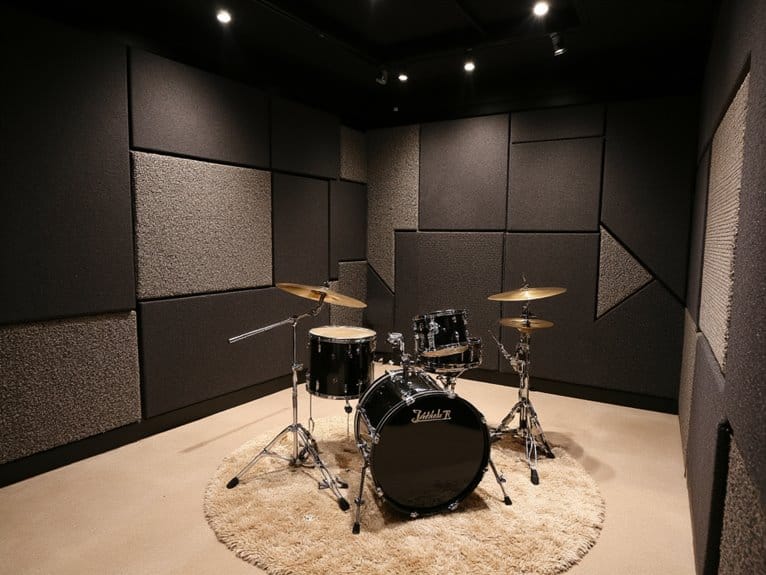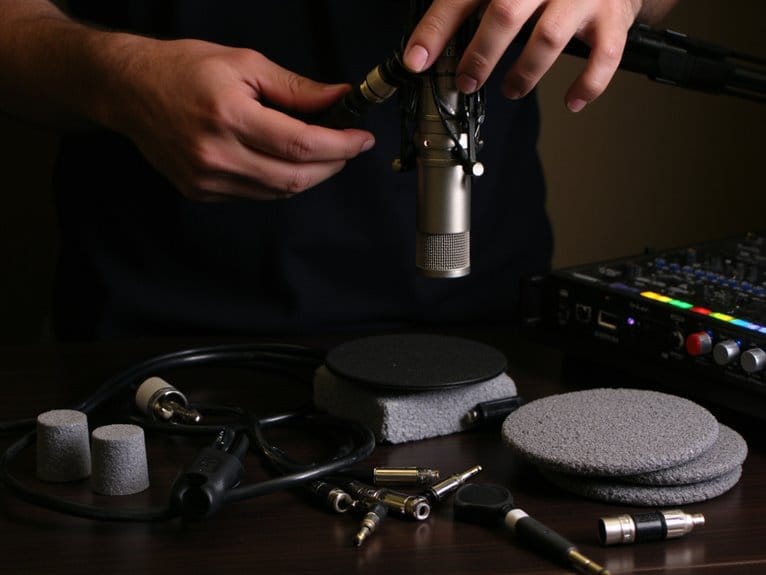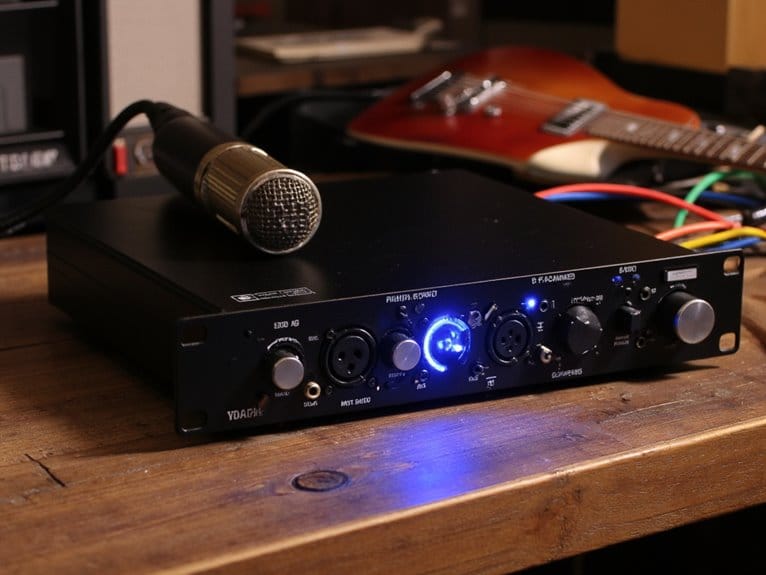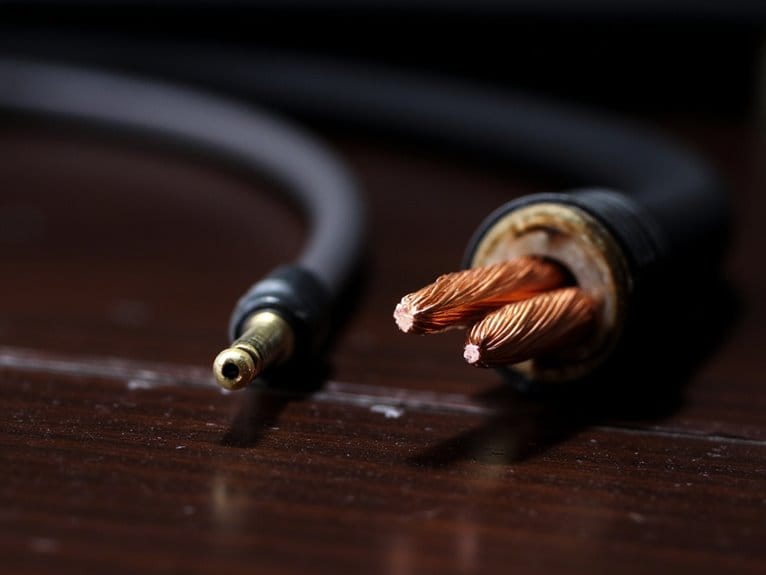How Many Inputs and Outputs Do I Need on My Audio Interface
You’ll need 2-4 inputs for home recording, covering microphones with phantom power and Hi-Z instrument connections, while basic monitoring requires two line outputs plus headphone capability. Small commercial studios typically demand 8-16 inputs for full bands, with combo jacks maximizing flexibility between mic and line levels. Count each microphone as one input, remember stereo sources consume two channels, and consider ADAT expansion ports for future growth. Below, we’ll explore specific configurations that match different recording scenarios.
We are supported by our audience. When you purchase through links on our site, we may earn an affiliate commission, at no extra cost for you. Learn more.
Notable Insights
- Count all microphones and instruments you’ll record simultaneously, adding 20-30% extra inputs for future growth and flexibility.
- Home studios typically need 2-4 inputs, while small commercial studios require 8-16 inputs for larger ensembles and bands.
- Each stereo source consumes two inputs; overdubbing requires fewer simultaneous inputs than live multi-instrument recording sessions.
- Basic setups need two line outputs plus headphone outputs; multiple musicians require additional headphone outputs for monitoring.
- Choose interfaces with ADAT expansion ports to add 8 more channels later without replacing your entire setup.
Understanding Your Recording Setup Requirements
When you’re starting your home studio journey, I’ve learned that understanding your specific recording needs saves both money and frustration down the road.
Your project scope determines everything from the number of inputs you’ll require to the quality specifications that matter most for your particular workflow.
Project scope drives every studio decision, from input requirements to quality specs that align with your specific recording workflow.
If you’re recording simple vocalist-guitarist sessions, you’ll need fewer inputs than someone tracking full bands simultaneously.
I’ve found that evaluating your current needs while considering future expansion prevents costly upgrades later.
Multiple track recording demands more inputs, while basic setups work fine with minimal connectivity.
Consider what input types you’ll use regularly—XLR connections for microphones, quarter-inch inputs for instruments, and MIDI capabilities for virtual instruments.
Budget constraints naturally influence your choices, but industry-standard sample rates remain essential regardless of price point.
Audio interfaces with superior ADC/DAC pathways deliver noticeably better sound quality compared to standard computer audio systems, making this conversion quality a crucial factor in your decision.
You’ll also need at least two outputs for stereo monitoring to properly hear your recordings during playback and mixing sessions.
Professional interfaces typically support 24-bit/192kHz recording capabilities that ensure superior audio fidelity and minimal noise during your recording sessions.
Essential features like phantom power enable you to use condenser microphones, which are crucial for capturing high-quality vocal and acoustic instrument recordings.
Calculating Input Needs Based on Your Equipment
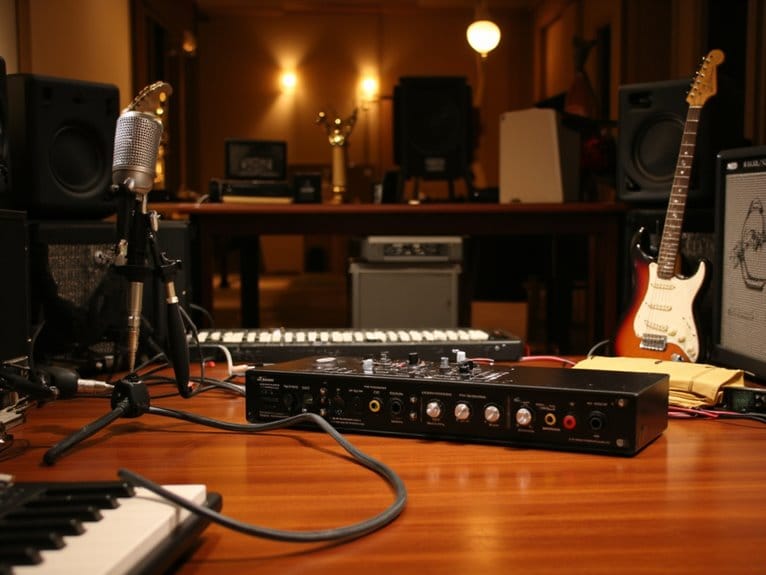
Before you can select the right audio interface, I’ve discovered that taking a methodical inventory of your equipment reveals exactly how many inputs you’ll actually need, rather than guessing and potentially overpaying for unused connectivity.
Start with your microphone count, since each mic requires its own dedicated input with phantom power capability for condensers. Next, assess your instrument types—electric guitars and basses need Hi-Z instrument inputs, while keyboards typically use line-level connections.
Don’t forget stereo sources like drum machines, which consume two inputs for left and right channels. I’ve learned that considering your recording workflow makes a significant difference; overdubbing one track at a time requires minimal inputs, whereas live ensemble recording demands simultaneous input capacity matching your total source count. Plan for at least one XLR input as this is essential for professional microphone connectivity in any streaming or recording setup. Understanding the noise performance characteristics of each input type becomes crucial when planning for professional-quality recordings across multiple channels.
Additionally, verify your interface’s maximum input level specifications to ensure your equipment operates within the optimal range without clipping, especially when recording loud sources or high-output instruments. Professional interfaces like the Scarlett 18i20 provide extensive I/O options with premium preamp performance for complex multi-instrument recording scenarios.
Determining Output Requirements for Your Monitoring Setup
Just as you’ve mapped out your input requirements, your output needs depend entirely on what you’re planning to monitor and how many people need to hear it simultaneously.
For basic recording, you’ll need two line level outputs for your studio monitors plus one dedicated headphone output, which most entry-level interfaces provide as standard equipment.
If you’re recording multiple musicians who need individual cue mixes, additional headphone outputs become essential for independent volume control and personalized monitoring.
Planning to integrate outboard gear requires extra line-level outputs for send and return paths, while surround sound mixing demands one output per speaker channel. When working with outboard audio equipment like compressors and EQs, you’ll need dedicated line outputs to route signals through these external processors and back into your interface.
Advanced production workflows require dedicated outputs for external processors and multi-channel monitoring setups that significantly expand your interface requirements.
Digital mixers with extensive routing options can provide 18 inputs and 20 outputs, offering the flexibility needed for complex recording setups where multiple musicians require separate monitoring feeds.
Zero-latency monitoring ensures real-time feedback without delays, which is vital for maintaining optimal performance during recording sessions.
For optimal monitoring, position your studio monitors correctly to ensure a balanced soundstage and accurate audio representation during your recording sessions.
Each expansion increases both cost and complexity, so match your interface’s output count to your actual monitoring requirements.
Planning for Future Expansion and Connectivity Options
The smartest interface purchase you’ll ever make starts with honestly evaluating where your studio might grow over the next few years, because I’ve watched countless producers outgrow their gear within months of buying what seemed like “plenty” of inputs at the time.
When planning for future growth, prioritize interfaces with ADAT expansion ports, which add eight digital channels per connection, or Thunderbolt connectivity for higher channel counts and DSP processing.
USB-C represents the sweet spot among connectivity standards, offering improved transfer rates and widespread compatibility compared to older USB formats.
Consider MADI or Ethernet-based protocols like DANTE if you’re planning large-scale recording sessions or multi-room setups, though these typically serve professional facilities rather than home studios.
Remember that driver stability becomes increasingly critical as your setup grows more complex, since unreliable drivers can cause major headaches during important recording sessions.
Most budget-conscious users can achieve professional results with interfaces featuring 24-bit resolution and 96-192 kHz sampling rates without breaking the bank.
Evaluate the preamp quality carefully when selecting your interface, as clean sound reproduction and sufficient gain will directly impact your recording results regardless of how many inputs you ultimately use.
The Focusrite Scarlett 18i20 demonstrates how 18-in/20-out configuration can accommodate complex sessions while maintaining compatibility with major DAWs like Pro Tools and Logic Pro.
Frequently Asked Questions
Can I Use Multiple Audio Interfaces Simultaneously to Increase My Input Count?
Yes, you can definitely use multiple audio interfaces simultaneously, though audio interface compatibility varies between manufacturers and models.
Most digital audio workstations support this setup when you’re using ASIO4ALL drivers or manufacturer-specific multi-device drivers.
I’ve found success combining units from the same brand, as they typically share clock synchronization protocols.
You’ll need to configure master/slave clocking relationships and maintain consistent buffer sizes across all interfaces for peak performance.
Do Phantom Power Requirements Affect How Many Inputs I Can Use Simultaneously?
Phantom power requirements don’t create input limitations on most modern audio interfaces, since each XLR input typically draws under 10mA. This allows you to power multiple condenser mics simultaneously without affecting performance.
While I’ve seen some portable or budget interfaces share power circuits, most home studio gear provides independent phantom power per channel. This means you can use all available XLR inputs with condenser mics without worrying about power capacity constraints.
What’s the Difference Between Line and Instrument Inputs When Counting Total Inputs?
When counting total inputs, you’ll find that line and instrument input types handle different signal levels through the same physical connection method, but they’re typically the same input jack.
Line level signals are stronger, coming from mixers or keyboards, while instrument level signals are weaker, from guitars or basses.
Most modern interfaces use combo jacks that switch between both automatically, so one physical input counts as one input regardless of whether you’re using line or instrument level.
Can I Record All Inputs Simultaneously or Are There Track Limitations?
You’ll typically record all inputs simultaneously without track limitation scenarios, since most modern interfaces handle this capability well, though your recording software compatibility becomes the determining factor.
I’ve found that professional DAWs like Pro Tools, Logic, and Reaper support extensive multi-channel recording, while budget software might restrict simultaneous track counts.
Your computer’s processing power, available RAM, and hard drive speed ultimately dictate performance limits.
Do Built-In Preamps Affect the Quality When Using All Inputs at Once?
Yes, built-in preamps quality can diminish when you’re using all inputs simultaneously, as the interface’s power gets distributed across multiple channels, potentially affecting input consistency and signal clarity.
I’ve noticed that budget interfaces struggle more with this than higher-end models, which feature better power supplies and circuit design that maintain consistent performance across all channels, even under full load conditions.
On a final note
When you’re choosing an audio interface, you’ll want to count your current gear carefully, then add at least two extra inputs and outputs for future needs. I’ve learned that most bedroom producers thrive with 4-8 inputs, while project studios typically need 8-16 channels. Don’t forget you’ll need separate outputs for headphones, monitors, and perhaps external processing. Planning ahead saves money and prevents that sinking feeling when you’re one input short during recording sessions.

